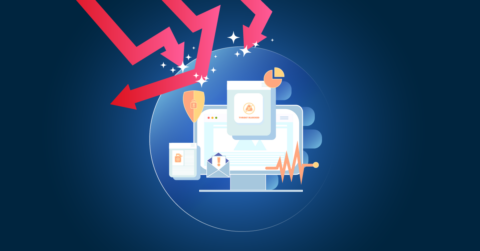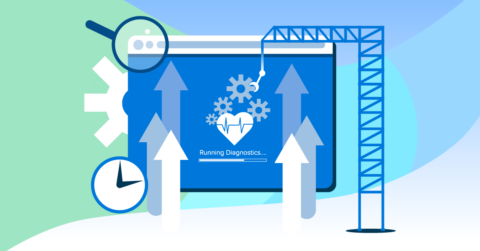
Nonprofit Analytics: 4 Metrics To Measure
05/09/24
Analytics
Data is vital for the success of any nonprofit organization. It helps you understand your audience better, allocate limited resources, and inevitably leads to better decision making. That’s why nonprofit analytics is such a valuable area for nonprofits to master.
In this article, we explore the power of nonprofit analytics for organizations. We also give you four of the most important metrics you should be tracking at your nonprofit.
Why Nonprofit Analytics Is Important
Before we cover the most important metrics, let’s first dive a bit deeper into nonprofit analytics as a whole. Why is it important, and why should you care?
Here are some of the most common benefits you can expect once you start tracking things seriously:
Helps you understand your donors
Who are your donors? How do they typically behave, and what are the actions they take throughout their relationship with your organization? These are all valuable insights to have, and nonprofit analytics is how you get them.
Gives you insight for better outreach
Once you understand who your donors are, the natural question is “How do I find more of them?” Nonprofit analytics can help. By more clearly understanding donor behavior, you can tailor your outreach strategies for better engagement and retention. The result? Happier donors – and more of them.
Allows you to personalize your communication
Messages tailored to individuals will always be more compelling and effective than a “cookie cutter” approach. This is where segmentation comes in. Nonprofit analytics give your organization a sophisticated understanding of the different groups your audience members belong to. You can then segment people on various data points (demographics, preferences, behavior, etc.). This leads to more personalized and higher quality communication.
Lets you improve your campaigns
Improvement can be difficult. It’s one thing to run fundraising campaigns – it’s an entirely different thing to iterate on them for better results. With nonprofit analytics, that’s no longer a problem. Collect data (and crucially, correctly interpret it), and you have insight. You know which campaigns worked, which ones didn’t, and what exactly needs improvement.
Saves you time and money
If nothing else, the insight of nonprofit analytics can make you more efficient in how you spend your time and money. Where are the areas you should double down on? Where would it be best to cut back? Marketing analytics provides insights into the ROI of various marketing channels. This aids in budget allocation, which allows you to stay lean and have maximum impact as efficiently as possible.
Four Nonprofit Data Key Metrics to Track
Now that we’ve covered just a few benefits to nonprofit analytics, let’s go over four of the most important metrics to track.
Remember that these metrics will be different across organizations, and that how exactly you measure them can vary. With that in mind, we’ve included a link for each one with more information on measuring it accurately.
1) Cost Per Acquisition (CPA)
This metric tells you how much it costs to acquire a new donor. Odds are you are employing various marketing strategies (content marketing and email marketing are just a few) to acquire new donors. This costs money, of course. This metric shows you exactly how much.
CPA is especially relevant if you are running paid ads. This can be a great channel to build your donor base fast, but it’s important to keep this number as low as possible. Overall, getting clear on this metric can help your organization optimize your acquisition strategies.
2) Conversion Rate
What is the percentage of website visitors who actually become a lead? That’s what this metric measures. It’s a metric that is relevant across all of your channels, and a number that helps with your entire marketing strategy.
Your conversion rate is important because it shows you what percentage of people take that “first step” of becoming an audience member. This can be anything from signing up for your newsletter to subscribing to your channel. The significance? These leads are much more valuable than anybody else, and have a higher likelihood of becoming a donor down the line. You increase it by offering more things of value to become a lead.
3) Lifetime Value (LTV)
If cost per acquisition (CPA) is how much a donor costs you, lifetime value is how much they will actually donate. The importance of this metric can’t be overstated. How much do your donors tend to give over time? Understand this number, and you are able to more accurately guide your long-term engagement strategies.
So, the obvious question: how do you increase LTV? The first step is actually asking people to donate. Sounds simple, but the caveat is that you do it effectively. This will require running better fundraisers. It’s also essential that you make it easy to donate. If there is even a little bit of confusion regarding the donation process, your campaign will suffer as a result.
4) Engagement
Our last nonprofit analytics metric is actually a collection of several that you might use. This includes metrics like click-through rates, open rates, and social media engagement. There are a variety of tools that can help you measure these accurately, as well as platforms that specialize in them.
As for the significance of overall engagement? The reason engagement is so important is that it’s one of the clearest indicators of an audience that will eventually donate. It doesn’t matter how big your email list is; if they don’t read what you are sending, they’re never going to become donors. The same holds true for your other marketing platforms. Get people more engaged, listening to what you have to say, and more donations will follow as a result.
…
Are you an enterprise, nonprofit or small business looking for help on your website? Give us a shout! We provide a free consultation. Email us at info@lughstudio.com or call us at (718) 855-1919!









